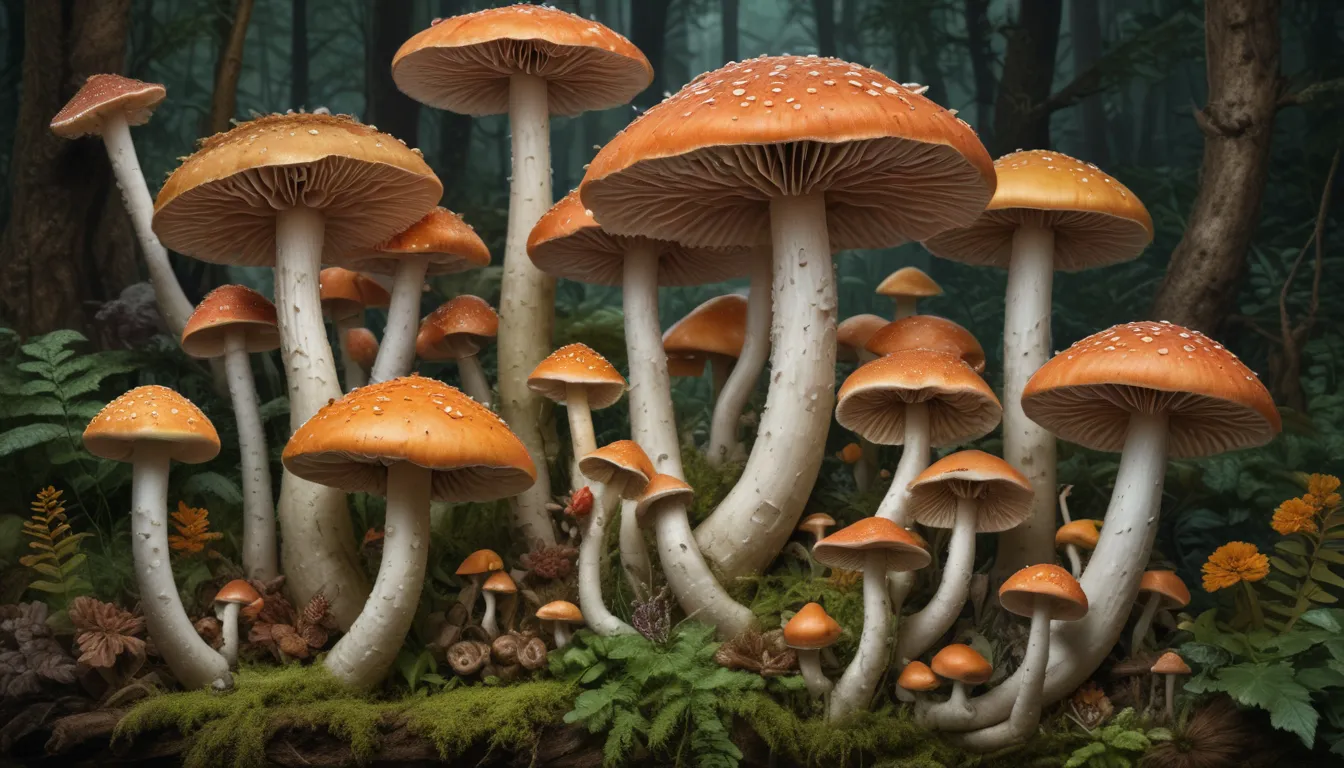A Note About Images: The images used in our articles are for illustration purposes only and may not exactly match the content. They are meant to engage readers, but the text should be relied upon for accurate information.
Welcome to the captivating world of fungi taxonomy, where the intricate classification of fungi species unveils a realm of fascinating mysteries and wonders. In this article, we will explore the depths of mycology to bring you twelve enigmatic facts about these extraordinary organisms. From their unique characteristics to their crucial ecological roles, fungi continue to intrigue us with their diverse traits and abilities.
Understanding the World of Fungi Taxonomy
Fungi taxonomy serves as a vital tool for scientists to comprehend the rich diversity of fungi species by utilizing physical and genetic traits for classification. This process not only reveals the ecological roles of fungi but also unveils their immense potential for various biotechnological applications. By delving into the secrets of fungi taxonomy, we can protect endangered species, study their relationships with plants, and harness their therapeutic, agricultural, and industrial benefits.
Fungi: A Kingdom of Distinct Characteristics
Unlike plants and animals, fungi exhibit unique characteristics that set them apart as a separate kingdom of life. Fungi cannot produce their own food through photosynthesis like plants, and they lack complex organ systems found in animals. This distinctiveness highlights the importance of understanding fungi taxonomy to appreciate their vital contributions to the ecosystem.
The Vast Diversity of Fungi Species
With an estimated 2 to 5 million species, fungi constitute a significant portion of Earth’s biodiversity. Despite their abundance, only a fraction of these species have been formally described and classified by taxonomists. This vast diversity underscores the complexity and richness of the fungal kingdom waiting to be explored.
Evolution and Innovation in Fungi Taxonomy
As new technologies and scientific discoveries emerge, fungi taxonomy continues to evolve and expand. Scientists constantly reevaluate and revise the classification system to incorporate the latest knowledge and insights, enhancing our understanding of the diverse world of fungi.
Unveiling Cryptic Species through Taxonomy
Fungi taxonomy has revealed the existence of cryptic species—organisms that are morphologically similar but genetically distinct—from previously described groups. Advanced molecular techniques play a crucial role in unveiling these enigmatic organisms, shedding light on the hidden diversity within the fungal kingdom.
The Role of Fungi Taxonomy in Ecosystems and Conservation
Deciphering Ecological Roles through Classification
By classifying fungi into distinct groups and categories, taxonomy helps scientists decipher the ecological roles and interactions of fungi within ecosystems. This knowledge is essential for understanding nutrient cycling, symbiotic relationships, and the dynamics of ecological systems.
Conservation and Preservation of Fungal Species
Accurate classification and identification of fungal species are critical for conservation efforts. By recognizing and preserving endangered or rare fungi species, we can safeguard their ecological roles and contribute to the overall health of ecosystems.
Mycorrhizal Relationships and Nutrient Cycling
The study of fungi taxonomy highlights the importance of mycorrhizal relationships, where fungi form beneficial partnerships with plant roots. These relationships play a vital role in nutrient cycling and plant growth, showcasing the intricate connections within ecosystems.
Uncovering the Biotechnological Potential of Fungi
By delving into the taxonomy and diversity of fungi, scientists can explore the immense potential of fungi for various biotechnological applications. Fungi serve as a rich source of enzymes, antibiotics, and other bioactive compounds with promising uses in medicine, agriculture, and industry.
Embarking on a Fascinating Journey into Fungi Taxonomy
As we navigate through the enigmatic world of fungi taxonomy, we unveil the boundless mysteries and wonders of these remarkable organisms. From classification to conservation, fungi continue to captivate us with their diverse traits and ecological significance. By delving deeper into the realm of mycology, we can expect to uncover even more astonishing facts about fungi in the future, enhancing our understanding and appreciation of these extraordinary life forms.
FAQs: Exploring the Intriguing World of Fungi Taxonomy
- What is fungi taxonomy, and why is it important?
- How do taxonomists classify fungi based on their characteristics?
- What challenges are faced in fungi taxonomy, and how are they addressed?
- How does fungi taxonomy contribute to medicine, agriculture, and environmental conservation?
- What advancements in fungi taxonomy have revolutionized the field?
- How can fungi taxonomy be applied to other fields of study?
- Where can you learn more about fungi taxonomy and mycology?
Conclusion: Embracing the Wonders of Fungi Taxonomy
In conclusion, the realm of fungi taxonomy offers a captivating journey into the diverse and fascinating world of mycology. From the classification of species to their ecological significance, fungi continue to intrigue us with their unique characteristics and roles in ecosystems. By exploring fungi taxonomy, we not only expand our knowledge of these remarkable organisms but also unlock their tremendous potential for scientific advancements and practical applications. Join us on this enlightening journey into the intriguing world of fungi taxonomy, where every discovery unveils a new layer of marvel and admiration for the extraordinary fungi that surround us.






